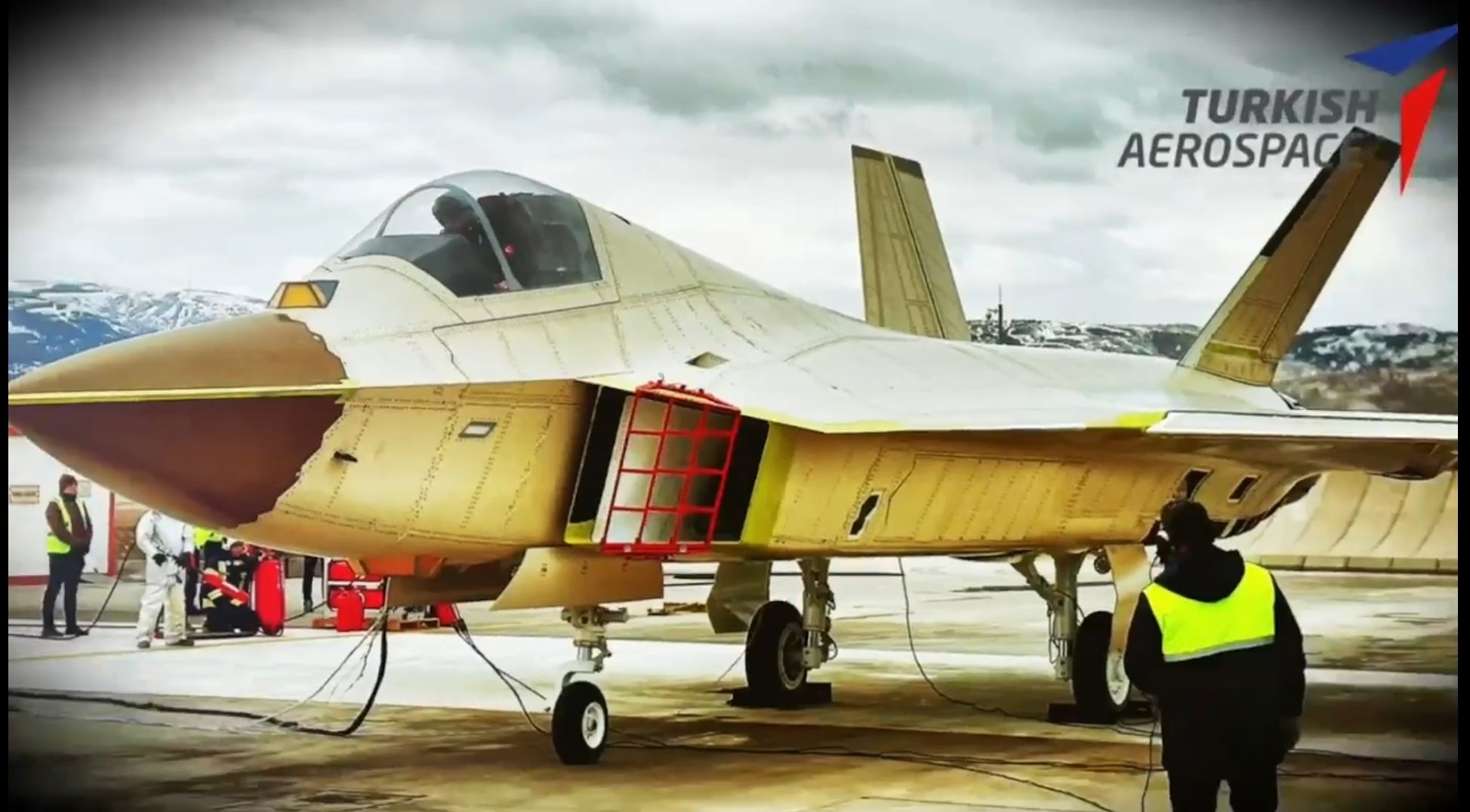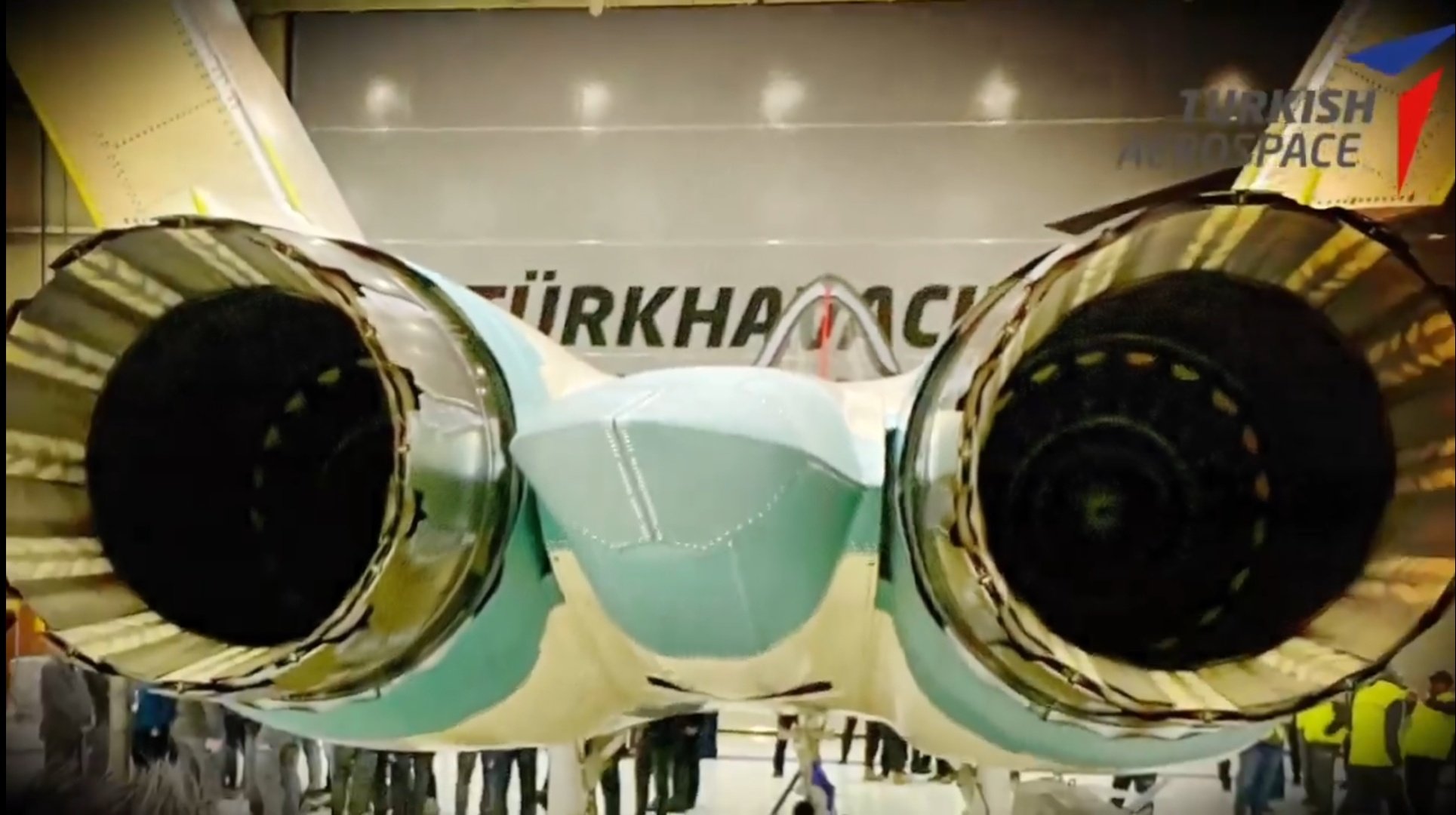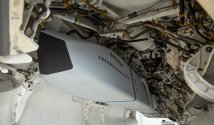You are using an out of date browser. It may not display this or other websites correctly.
You should upgrade or use an alternative browser.
You should upgrade or use an alternative browser.
Turkey Military News, Reports, Data, etc.
- Thread starter Jeff Head
- Start date
Before it was painted:


The unpainted photo answered a question I had earlier. The landing gear door does in fact have a form of sawtooth treatment. The leading edge is at an 45 degree angle and when the bay door is closed, it forms a single sawtooth. Due to the angle on the other photos I was under the mistaken impression that the leading edging of the bay door is flat.
The photo also makes it apparent that there is no explosive detonation cord in the canopy. When the canopy is open I’m willing to bet that you’ll see the “PVC pipes”, which are rockets for throwing the canopy in the event of ejection.
The photo also makes it apparent that parts of the vertical stabilizers have been treated with radar absorbing material. If I am not mistaken internally they'd be honeycombed to save weight and further reduce radar signature.
Last edited:
Dude where did you even find these pics? These were never shared before.Before it was painted:


Oh, wait. Secretprojects. Got it.
A F-22's bay is a big void which demands rigidness of the fuselage structure around it. The center divide is too thin for the job. However if you put half of that void in between the fuselage it is much easier to realize.Yes. It is unique in the sense that it has a long center bay despite having a similar belly configuration to the F-22.
One may argue that Sukhoi faced rigidness problem as well at the beginning, but Su-57's gap between the two engines are much larger (more than the diameter of the engine) making the problem even worse. The gap is all the way through like Su-27. That also has impact of air pressure/stress.
For TFX, the gap is much smaller at about 90% of engine diameter. And most importantly the gap is only partial, doesn't have the air pressure/stress. So it faces much less demand than Su-57, but can gain more on structural rigidness.
F-22 and Su-57 meet the rigidness demand by titanium bulkheads in the critical place. Su-57's side of weapon bay is titanium all the way. Essentially both aircrafts are built around these titanium boxes. With the risk of upsetting people here, I'd say TFX is betting on the safer approach, and yes I know the TFX titanium demo piece.
Would be interesting to see if that bay will be long and deep enough to carry one large standoff weapon/antiship missile. Interesting design.Yes. It is unique in the sense that it has a long center bay despite having a similar belly configuration to the F-22.
There are two optical windows on the nose of the aircraft — one above and one below. I believe the top one is used to aerial engagement (rear aspect appears to be opaque like it does on J-20’s EOTS). The one below the nose has 360 transparency and will be used against ground based assets. If we are given more close ups I will be able to tell whether there are DAS windows distributed around the fuselage. Both sensors are faceted, which will provide superior signature reduction compared with spherical IRST on KF-X and Su-57 which will contribute to creeping wave.
We have literally shared dozens of semi detailed quotes from the CEO about the use of tiranium before and here's a hint. It is not only used in the bulkhead.A F-22's bay is a big void which demands rigidness of the fuselage structure around it. The center divide is too thin for the job. However if you put half of that void in between the fuselage it is much easier to realize.
One may argue that Sukhoi faced rigidness problem as well at the beginning, but Su-57's gap between the two engines are much larger (more than the diameter of the engine) making the problem even worse. The gap is all the way through like Su-27. That also has impact of air pressure/stress.
For TFX, the gap is much smaller at about 90% of engine diameter. And most importantly the gap is only partial, doesn't have the air pressure/stress. So it faces much less demand than Su-57, but can gain more on structural rigidness.
F-22 and Su-57 meet the rigidness demand by titanium bulkheads in the critical place. Su-57's side of weapon bay is titanium all the way. Essentially both aircrafts are built around these titanium boxes. With the risk of upsetting people here, I'd say TFX is betting on the safer approach, and yes I know the TFX titanium demo piece.
There are two large tandem bays and two small side bays. Tandem bays are each capable of carrying at least one SOM-J cruise/anti-ship missile that was originally developed for the F-35. We currently do not know if it can also carry additional a-a missiles in this config.Would be interesting to see if that bay will be long and deep enough to carry one large standoff weapon/antiship missile. Interesting design.

Although the fuselage is a bit thick and bulky like the F-35, it is not a deep-strike oriented platform as it can only carry 1000lb bombs inside just like the F-22.
You misunderstood my point or I wasn't clear enough. The smaller the structure is the easier to make it either through forging or 3D printing regardless titanium or aluminium.We have literally shared dozens of semi detailed quotes from the CEO about the use of tiranium before and here's a hint. It is not only used in the bulkhead.
For a fighter with internal weapons bay, titanium is probably the only choice due to the high stress demand. That is why KFX in its 1st iteration does not have internal weapons bay because of aluminium bulkhead. TFX has to use titanium for its bay, the question is how big a void can the industry make out of titanium. Hence my point.
Last edited:
It is not small, in fact it is slightly bigger than F-22. You might be confusing its size with Boramae but this beast has 2 F110s powering it.Yes, the smaller the structure is the easier to make it either through forging or 3D printing regardless titanium or aluminium.
I am not talking about the overall size of the aircraft, but the void of weapon's bay.It is not small, in fact it is slightly bigger than F-22. You might be confusing its size with Boramae but this beast has 2 F110s powering it.
